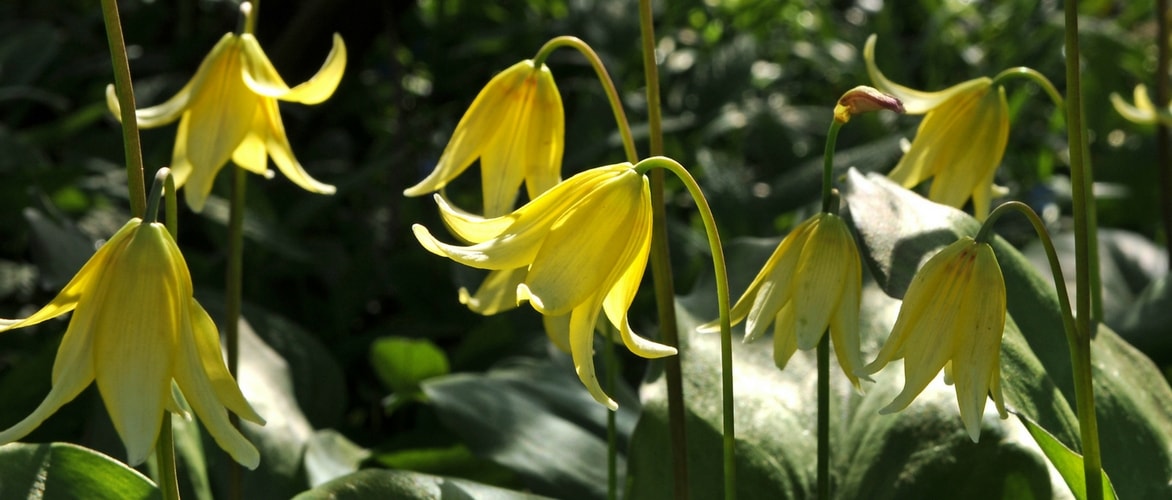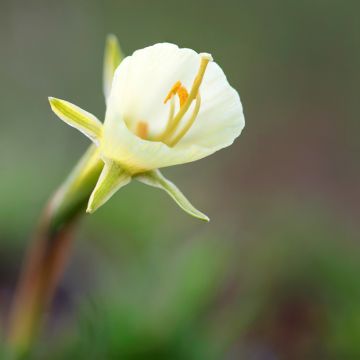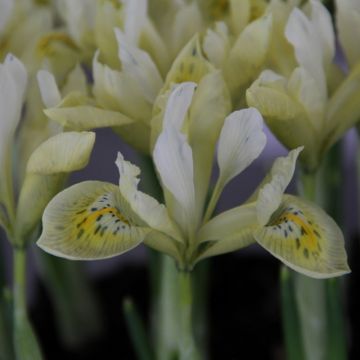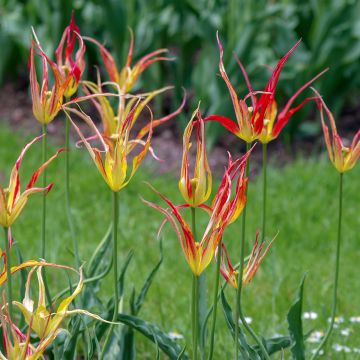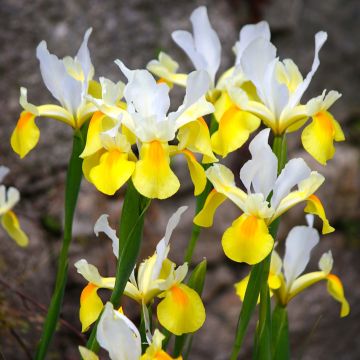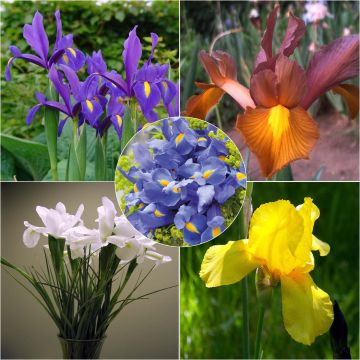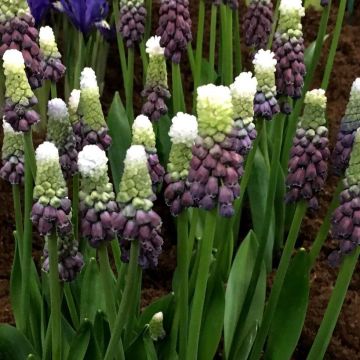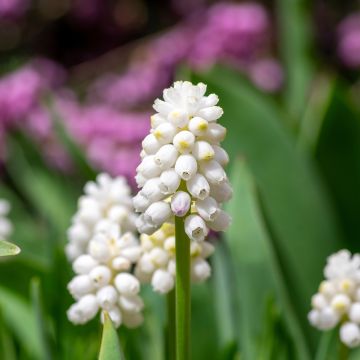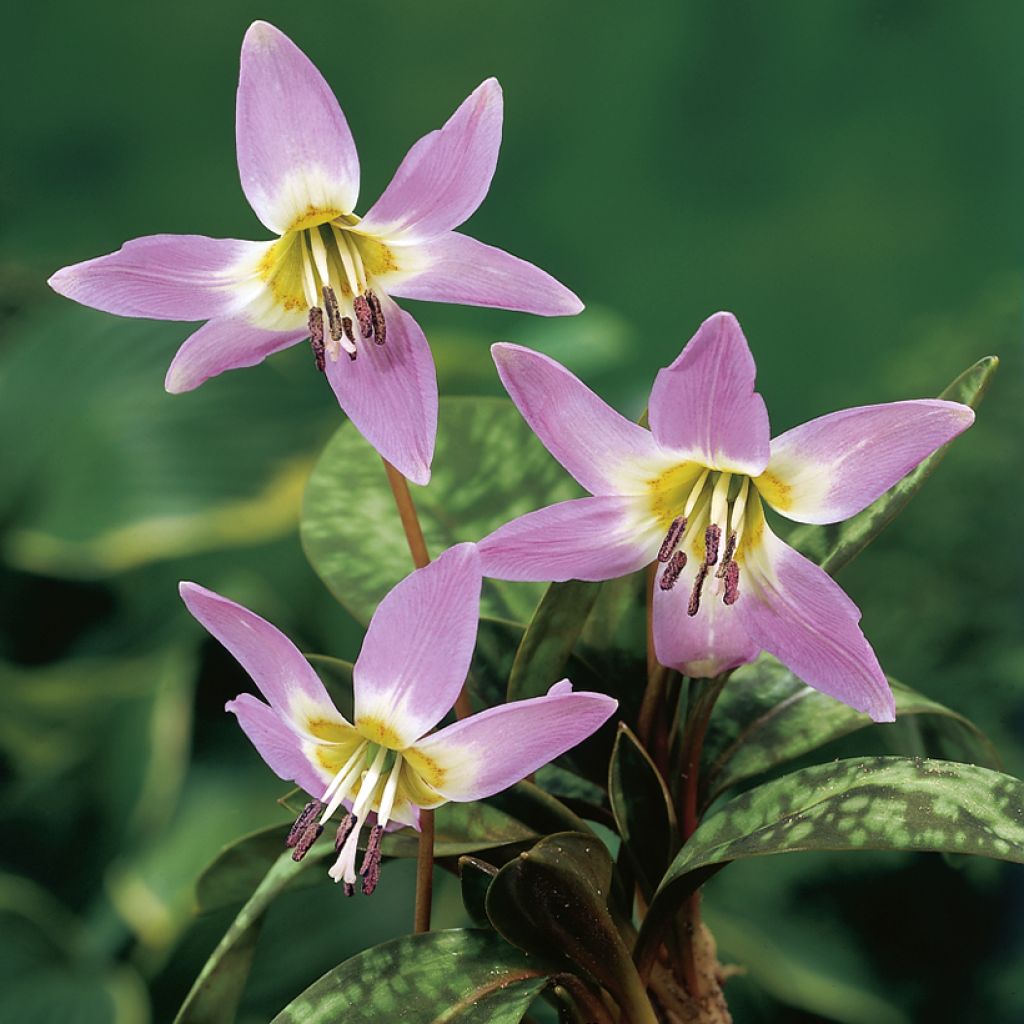

Erythronium dens-canis Lilac Wonder
Erythronium dens-canis Lilac Wonder
Erythronium dens canis Lilac Wonder
Dog's tooth Violet
Special offer!
Receive a €20 voucher for any order over €90 (excluding delivery costs, credit notes, and plastic-free options)!
1- Add your favorite plants to your cart.
2- Once you have reached €90, confirm your order (you can even choose the delivery date!).
3- As soon as your order is shipped, you will receive an email containing your voucher code, valid for 3 months (90 days).
Your voucher is unique and can only be used once, for any order with a minimum value of €20, excluding delivery costs.
Can be combined with other current offers, non-divisible and non-refundable.
This plant carries a 6 months recovery warranty
More information
We guarantee the quality of our plants for a full growing cycle, and will replace at our expense any plant that fails to recover under normal climatic and planting conditions.
Would this plant suit my garden?
Set up your Plantfit profile →
Description
Erythronium dens-canis 'Lilac Wonder' is a small bulbous plant that is still relatively unknown to gardeners despite its many advantages. Its green leaves marbled with brown are charming, but its highly aesthetic flowering is particularly appealing. In the heart of spring, short floral stems appear, topped with a gracefully forward-leaning flower, with mauve-lilac petals curved upwards, contrary to the stamens and pistil. Resistant to cold, this dog's tooth violet thrives in semi-shade, in rich, well-drained soil that is not too dry. Planting in groups will create a particularly ornamental mass effect.
Erythronium dens-canis belongs to the Liliaceae family, like lily of the valley, tulip, or lily. This rather unknown genus is nevertheless rich in 27 species, almost all of them American except for 3 Asian and this indigenous "dog's tooth" in Europe. This surprising name comes from the shape of the bulb, which resembles a canine tooth. This plant is from the undergrowth. It thrives in humiferous, rich, light, moist soils that are either acidic, neutral or without excess limestone. It does not like being waterlogged. Erythronium dens-canis, of European mountain origin, does not appreciate heatwaves or long, very dry summers.
'Lilac Wonder' is a beautiful hybrid that has received the prestigious Award of Garden Merit from the Royal Horticulture Society. It reaches approximately 15 to 20cm (6 to 8in) in height and 10 to 15cm (4 to 6in) in width. The plant forms two leaves from spring, from which a flower stem emerges a few centimetres above. The thick leaves are somewhat soft and somewhat 'greasy'. They are oval to oblong, lanceolate, and sheathing at the base. The lamina is dark green, shiny, and marbled with brown, resembling that of the Early Purple Orchid. From April to May, fine reddish-brown flower stems appear, gracefully curved downwards at the tip. Each stem bears a solitary flower, hanging towards the ground, with 6 recurved petals, revealing 6 long violet anthers that stretch towards the ground, contrary to the petals. This sculptural flower morphology can also be found in cyclamen, a member of another botanical family (Primulaceae). In this hybrid, the petals have a beautiful mauve-lilac hue, with a central macule that is more or less yellow, bordered by a purplish edge.
The foliage dries up during summer, corresponding to the bulb's dormant period. The flowering is followed by the formation of small black and ochre seeds, which fall near to the plant and are exclusively dispersed by ants.
This bulbous plant grows in a wide variety of soils (pH 4.5 to 7.5) except for those that are truly limestone, and requires moisture. The bulb does not tolerate drought. It will easily naturalise if the location suits it well. In summer, a layer of straw will prevent water evaporation and maintain slight humidity.
Due to the disturbance of its habitat, and perhaps also the covetousness of rare plant enthusiasts, this dog's tooth violet has become quite rare in nature. It has given rise to beautiful horticultural forms, such as 'Lilac Wonder', which are quite difficult to find in commerce. Plant it in large numbers, at the edge of deciduous trees, to achieve an interesting visual effect and associate it with other plants that share the same requirements. Solomon's Seal (Polygonatum), with its striking stature and small white flowers in clusters, is perfect as a background. Caucasian Forget-Me-Not (Brunnera macrophylla), with its kidney-shaped leaves, produces charming blue flowers at the same time as erythronium. To vary the styles and enjoy sophisticated flowering in a wide range of colours, add a few plants of Epimedium, a delightful little perennial that is well-suited to partial shade. Finally, to extend the flowering season into summer, plant Ajuga reptans 'Rosea', a creeping bugle with pink flowers.
Plant habit
Flowering
Foliage
Botanical data
Erythronium
dens canis
Lilac Wonder
Liliaceae
Dog's tooth Violet
Cultivar or hybrid
Planting and care
You should plant as soon as you receive your order!
Plant in groups of 3 to 5, covered with 6cm (2in) of good soil enriched with compost. It tolerates the presence of a little limestone in the soil if it is rich in leaf compost. It likes moist but not waterlogged soil, even in summer (the bulb is afraid of excessive drought and the plant dislikes heatwaves). Choose a semi-shaded exposure, at the base of deciduous trees and bushes or in east-facing flower beds, or even in a slightly shaded rock garden with soil that doesn't dry out too much. The plant needs light to flower in spring, but its bulb enjoys resting in the shade in summer. Space the bulbs 8cm (3in) apart. They multiply easily by producing bulblets. Spontaneous sowings in the garden can also be observed, but the flower colour is not guaranteed. This plant is resistant to cold. Place a thick layer of straw on the base of the plants in summer to preserve soil moisture. Water from time to time if summer is dry.
Planting period
Intended location
Care
Planting & care advice
This item has not been reviewed yet - be the first to leave a review about it.
Similar products
Haven't found what you were looking for?
Hardiness is the lowest winter temperature a plant can endure without suffering serious damage or even dying. However, hardiness is affected by location (a sheltered area, such as a patio), protection (winter cover) and soil type (hardiness is improved by well-drained soil).

Photo Sharing Terms & Conditions
In order to encourage gardeners to interact and share their experiences, Promesse de fleurs offers various media enabling content to be uploaded onto its Site - in particular via the ‘Photo sharing’ module.
The User agrees to refrain from:
- Posting any content that is illegal, prejudicial, insulting, racist, inciteful to hatred, revisionist, contrary to public decency, that infringes on privacy or on the privacy rights of third parties, in particular the publicity rights of persons and goods, intellectual property rights, or the right to privacy.
- Submitting content on behalf of a third party;
- Impersonate the identity of a third party and/or publish any personal information about a third party;
In general, the User undertakes to refrain from any unethical behaviour.
All Content (in particular text, comments, files, images, photos, videos, creative works, etc.), which may be subject to property or intellectual property rights, image or other private rights, shall remain the property of the User, subject to the limited rights granted by the terms of the licence granted by Promesse de fleurs as stated below. Users are at liberty to publish or not to publish such Content on the Site, notably via the ‘Photo Sharing’ facility, and accept that this Content shall be made public and freely accessible, notably on the Internet.
Users further acknowledge, undertake to have ,and guarantee that they hold all necessary rights and permissions to publish such material on the Site, in particular with regard to the legislation in force pertaining to any privacy, property, intellectual property, image, or contractual rights, or rights of any other nature. By publishing such Content on the Site, Users acknowledge accepting full liability as publishers of the Content within the meaning of the law, and grant Promesse de fleurs, free of charge, an inclusive, worldwide licence for the said Content for the entire duration of its publication, including all reproduction, representation, up/downloading, displaying, performing, transmission, and storage rights.
Users also grant permission for their name to be linked to the Content and accept that this link may not always be made available.
By engaging in posting material, Users consent to their Content becoming automatically accessible on the Internet, in particular on other sites and/or blogs and/or web pages of the Promesse de fleurs site, including in particular social pages and the Promesse de fleurs catalogue.
Users may secure the removal of entrusted content free of charge by issuing a simple request via our contact form.
The flowering period indicated on our website applies to countries and regions located in USDA zone 8 (France, the United Kingdom, Ireland, the Netherlands, etc.)
It will vary according to where you live:
- In zones 9 to 10 (Italy, Spain, Greece, etc.), flowering will occur about 2 to 4 weeks earlier.
- In zones 6 to 7 (Germany, Poland, Slovenia, and lower mountainous regions), flowering will be delayed by 2 to 3 weeks.
- In zone 5 (Central Europe, Scandinavia), blooming will be delayed by 3 to 5 weeks.
In temperate climates, pruning of spring-flowering shrubs (forsythia, spireas, etc.) should be done just after flowering.
Pruning of summer-flowering shrubs (Indian Lilac, Perovskia, etc.) can be done in winter or spring.
In cold regions as well as with frost-sensitive plants, avoid pruning too early when severe frosts may still occur.
The planting period indicated on our website applies to countries and regions located in USDA zone 8 (France, United Kingdom, Ireland, Netherlands).
It will vary according to where you live:
- In Mediterranean zones (Marseille, Madrid, Milan, etc.), autumn and winter are the best planting periods.
- In continental zones (Strasbourg, Munich, Vienna, etc.), delay planting by 2 to 3 weeks in spring and bring it forward by 2 to 4 weeks in autumn.
- In mountainous regions (the Alps, Pyrenees, Carpathians, etc.), it is best to plant in late spring (May-June) or late summer (August-September).
The harvesting period indicated on our website applies to countries and regions in USDA zone 8 (France, England, Ireland, the Netherlands).
In colder areas (Scandinavia, Poland, Austria...) fruit and vegetable harvests are likely to be delayed by 3-4 weeks.
In warmer areas (Italy, Spain, Greece, etc.), harvesting will probably take place earlier, depending on weather conditions.
The sowing periods indicated on our website apply to countries and regions within USDA Zone 8 (France, UK, Ireland, Netherlands).
In colder areas (Scandinavia, Poland, Austria...), delay any outdoor sowing by 3-4 weeks, or sow under glass.
In warmer climes (Italy, Spain, Greece, etc.), bring outdoor sowing forward by a few weeks.






























